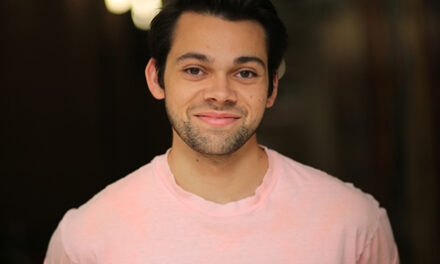Except for the first few rows, Hill Hall was packed with friends, relatives and diverse townspeople for the Chapel Hill-Carrboro Community Chorus Christmas concert on December 15. The audience held very few familiar faces from the regular concert season and ran the gamut from retirees from Carol Woods to an occasionally grumpy baby and a lot more children than is the norm. The stage held a solid ad hoc orchestra of experienced free lancers, North Carolina Symphony players and more than a few Chamber Orchestra of the Triangle regulars. Not surprisingly, Robbie Link, bassist of many Triangle music ensembles, was an anchor, along with chamber organist Marianne Kremer. All these forces and sets of soloists were under the able direction of Susan Klausmeyer. I had not heard this group previously but can now add it to the large number of fine choirs available for the music lover in the Triangle – various university and college choirs, civic choruses in Raleigh and Durham, and director Rodney Wynkoop’s several associated ensembles.
The concert opened with an incisive performance of Johann Sebastian Bach’s festive Magnificat in D, S.243. This was somewhat “deja vu” as just a week earlier I had reviewed another fine reading of the same work in the same hall, directed by this performance’s soprano II, Susan Klebanow. She was joined by Patricia Donnelly Philipps (soprano I), alto Caryl Price, tenor Dale Bailey and bass William Adams. The orchestra played very well and, after a trace of strain on a few early high notes, the trumpets executed some thrilling trills. Klausmeyer secured a good balance between the orchestra and chorus. The diction of the chorus was clear and its sound color reflected the greater maturity of its members. There was a good percentage of high and low male voices. When I first started attending concerts, most university choruses tended to have too few men singers. Compared with last week’s performance, this concert’s soloists had somewhat smaller voices but still managed to fill the hall. Klebanow was fine in her solo, the first aria. Oboist Lois Schultz had the first of many glowing solos in the first ensemble, “Von Himmel hoch,” which used about a third of the chorus. Philipps had a nice ring to her high notes in the aria “Quia respexit” (again with oboist Schultz), her duet with the Adams (“Virga Jesse floruit”) and the lovely trio “Suscepit Israel,” which involved the other two women soloists. Adams’ large, lightweight voice easily filled the hall; I suspect he is in fact a baritone, rather than a bass. Caryl Price was listed as an alto but her voice is so light that I would consider her a mezzo-soprano. She was fine in her aria, a duet with the tenor and in the trio. Tenor Dale Bailey’s vocalism was somewhat constricted but he conveyed the text nicely.
Next came a rare performance of Franz Schubert’s Magnificat in C. The program directed the reader to use the Bach text but, having heard some long-winded Schubert pieces, I was unprepared for what was in effect, a “Cliff Notes Magnificat!” Its three movements were listed as I. Allegro maestoso (chorus), II. Andante (soloists–a solo quartet, actually), an III. Allegro vivace (chorus). Well, I followed the chorus through what seemed to be no. 4 of the Bach text in the first movement and then, before I could find where the quartet of Philips, Price, Bailey and Adams were, the Andante, which had an extended and moving solo for oboist Schultz and strings, had ended! The piece concluded rapidly with the martial sounds of “Gloria Patri et Filio.” (no. 12 in the Bach) for full orchestra and chorus.
The highlight came after intermission with a superb performance of another work unknown to me, Ralph Vaughan Williams’ Fantasia on Christmas Carols, for baritone, chorus and orchestra. Bass Adams and the chorus had clear diction which made it easy to follow since the text wasn’t printed. Several unfamiliar carols are used; the work opened with Virginia Hudson’s solo cello, which splendidly conveyed a feeling of the elegiac, tinged by melancholy and nostalgia, that colors many of Vaughan Williams’ folk-influenced works, including this one. Hudson had a number of prominent solos throughout, and her full, rich cello palette was apt.
An arrangement by Fred Prentice of “Sing We Now of Christmas” was a pleasing piece performed a cappella that showed the chorus’s excellent diction as different sections sang different portions at the same time, allowing for considerable contrasts of both texture and color.
Large bongo drums dominated the complex rhythmic accompaniment for “African Noel,” arranged by Andre J. Thomas. The singers clearly had fun trying to be “loose” but wouldn’t be mistaken for a regular gospel choir.
The audience was invited to participate in the refrain of Conrad Susa’s effective medley, “A Christmas Garland,” and did so with enthusiasm. The soloists–alto Bette Roop, tenor William Kudros, baritone Mike Shannon and bass Steve Lockwood–essayed various familiar carols that were in turn taken up by the chorus. Of these, the tenor and baritone were the most effective. Understandably the solo voices were not as full and did not project as well as the professional soloists, and what they were singing didn’t always reach the whole hall, but the piece served as a perfect vehicle to end the concert in holiday spirits.
[Editor’s note : Due to an atypical bit of overlapping programming, Triangle music lovers recently had three strikes at Vaughan Williams’ Fantasia on Christmas Carols in two days, thanks to the Capital Area Chorale, the Concert Singers of Cary, and the Chapel Hill-Carrboro Community Chorus. As it happens, Schubert’s brief Magnificat was also done concurrently in Cary and Chapel Hill. And, as William Thomas Walker notes immediately above, Bach’s Magnificat was given twice, in the same venue, just eight days apart.]











